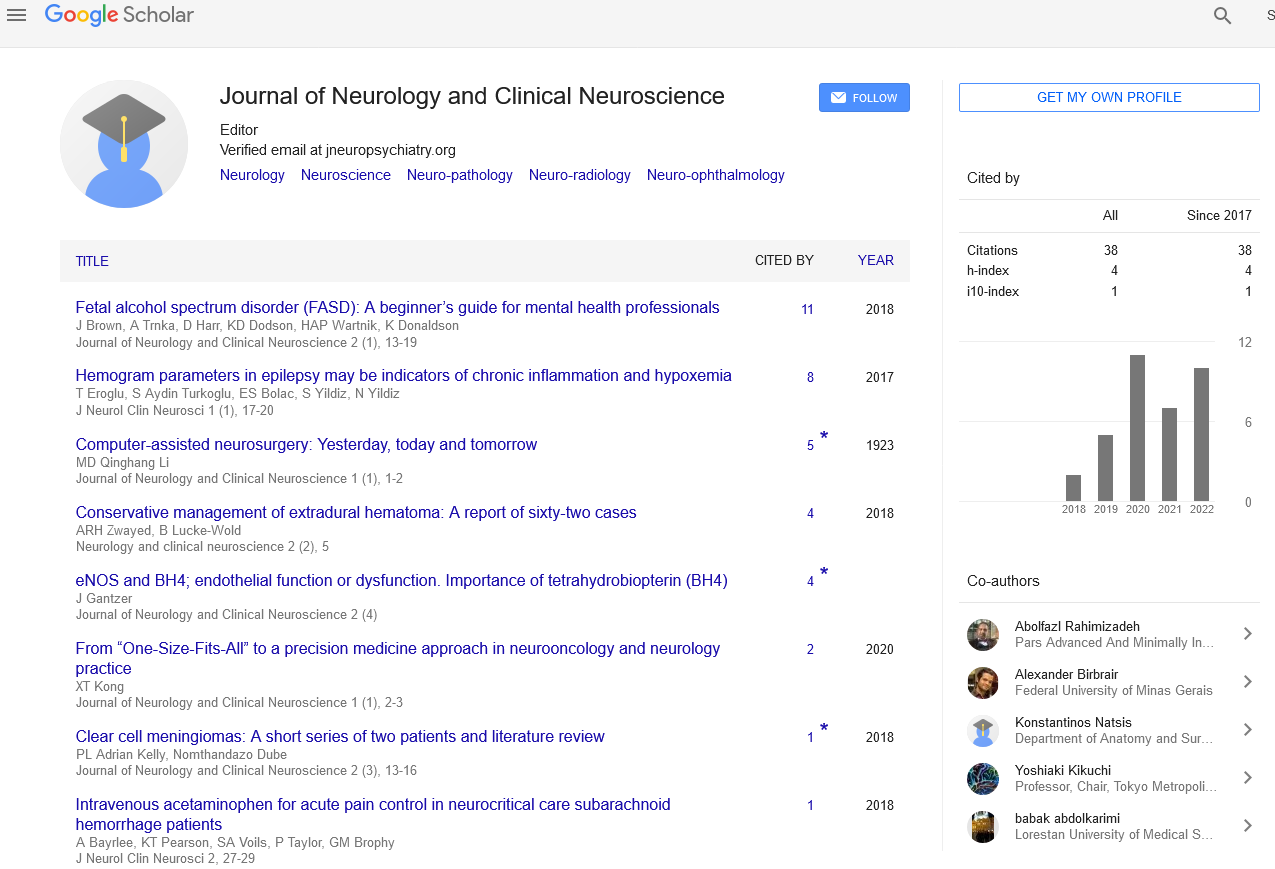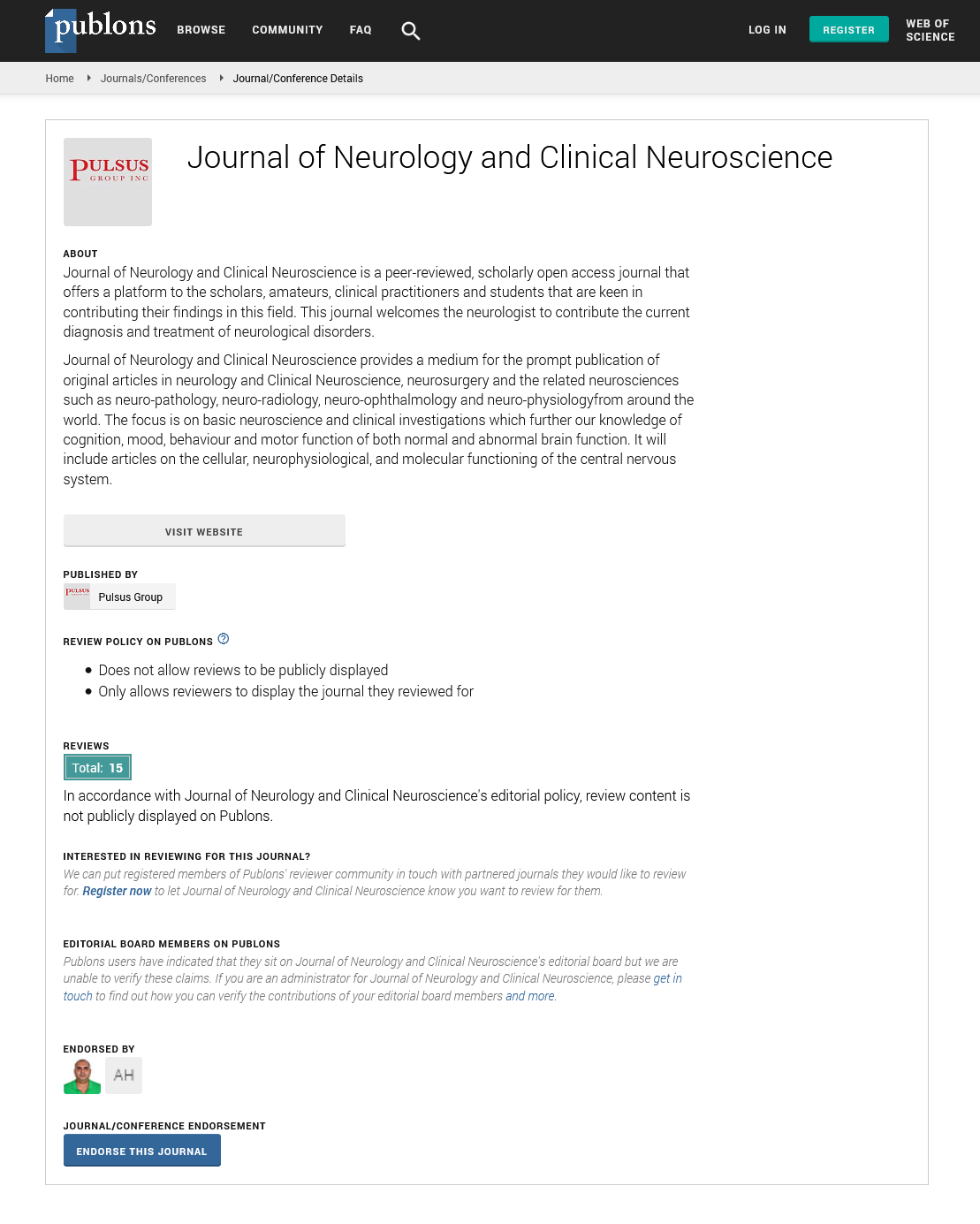brief note on guillain barre syndrome a neurological disorder
Received: 05-Nov-2021 Accepted Date: Nov 19, 2021; Published: 26-Nov-2021
Citation: Karimian M, Karimian M.Are neonatal neurons more susceptible to damage? J Neurol Clin Neurosci 2021;5(5):4.
This open-access article is distributed under the terms of the Creative Commons Attribution Non-Commercial License (CC BY-NC) (http://creativecommons.org/licenses/by-nc/4.0/), which permits reuse, distribution and reproduction of the article, provided that the original work is properly cited and the reuse is restricted to noncommercial purposes. For commercial reuse, contact reprints@pulsus.com
Editorial Note
Neuronal injuries in neonates encompass a variety of diseases that in some cases may result in permanent defects. Identifying specific neuronal mechanisms that make them susceptible to develop the disease will be important for both diagnosis and on-time treatment. In this article, some aspects have been mentioned.
Brain diseases encompass a wide variety of diseases ranging from neonates to adulthood. Hence, it can derive from this diversity, different causes may be suspected. However, there has been not substantial development to identify a determinant factor that distinguishes brain diseases in a neonate from adulthood developing diseases.
Neuronal injuries indicate different mechanisms. Brain disease in neonates that ranges from intrauterine-developed diseases to those that occurs some years after birth. They may have unspecific symptoms that cannot completely show disease manifestation to those with permanent side-effects. From this angled view, it will be very hard to relate biological findings to known or unknown clinical manifestations. Also, it would be very hard to search for a possible mechanism. The influence of neonatal pain on the development of nociceptive circuitry, nociceptive processing, and pain perception has been the subject of extensive attention in the last decade. Evidence from human and animal studies shows that early infant exposure to unpleasant stimuli might cause long-term abnormalities in sensory processing.
Ion channels have been shown to be related to different kind of diseases in neonates. This mechanism will become more probable when ion channels related diseases like epilepsy or convulsion especially those occur in neonates and childhood period have ion channel-related mechanisms. Different studies support the theory that ion channel expression is different in neonates from adulthood. Also, some channels have been proposed to modulate oxidative stress injury. Some studies propose about the existence of protective channels in neonate neurons that induces preconditioning that prepare neurons from further damages.
Oligodendroglial is the target of neuronal damages in neonates. This type of glial cell is more prone to oxidative-stress damages than other glial cells. This is due to high metabolic rate and the resultant an energy consuming process. Also, it is discovered that after oxidative-stress injury genes that are required for oligodendroglials maturation are not fully expressed. These cells are involved in a variety of neurologic diseases. About the ion channel influence on the appearance of this increased susceptibility, there is not study.
Recent findings propose the assessment of biological factors as biomarkers for early diagnosis of the possible destruction of neurons by toxic material especially oxidative stress. For example materials that are released by body tissues that harmful for neurons. Among some molecules, Adenosine (Ado) that is released by preterm infants has been introduced as a biomarker. On basis of these findings, new treatments have been proposed like ado antagonist (caffeine).
Based on the above findings new results indicate some specific characteristics with neonates' neurons that make them susceptible to more injury and can be aimed to prevent destructive damages. These findings bring new strategies to reduce permanent side effects.





